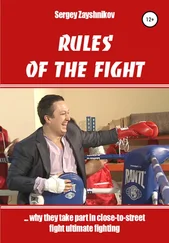Victor O'Reilly - Rules of The Hunt
Здесь есть возможность читать онлайн «Victor O'Reilly - Rules of The Hunt» весь текст электронной книги совершенно бесплатно (целиком полную версию без сокращений). В некоторых случаях можно слушать аудио, скачать через торрент в формате fb2 и присутствует краткое содержание. Жанр: Триллер, на английском языке. Описание произведения, (предисловие) а так же отзывы посетителей доступны на портале библиотеки ЛибКат.
- Название:Rules of The Hunt
- Автор:
- Жанр:
- Год:неизвестен
- ISBN:нет данных
- Рейтинг книги:4 / 5. Голосов: 1
-
Избранное:Добавить в избранное
- Отзывы:
-
Ваша оценка:
- 80
- 1
- 2
- 3
- 4
- 5
Rules of The Hunt: краткое содержание, описание и аннотация
Предлагаем к чтению аннотацию, описание, краткое содержание или предисловие (зависит от того, что написал сам автор книги «Rules of The Hunt»). Если вы не нашли необходимую информацию о книге — напишите в комментариях, мы постараемся отыскать её.
Rules of The Hunt — читать онлайн бесплатно полную книгу (весь текст) целиком
Ниже представлен текст книги, разбитый по страницам. Система сохранения места последней прочитанной страницы, позволяет с удобством читать онлайн бесплатно книгу «Rules of The Hunt», без необходимости каждый раз заново искать на чём Вы остановились. Поставьте закладку, и сможете в любой момент перейти на страницу, на которой закончили чтение.
Интервал:
Закладка:
The lights of Kawasaki showed up ahead, and soon the cooling towers and industrial labyrinth that was the might of Namaka Steel. The plant was vast and operated around the clock. All kinds of steel were produced there. Pride of place was given to the well-guarded inner compound which housed the long, beige, ultramodern building of Namaka Special Steels. Special Steels forged the high-specification alloys required for the aerospace industry and it also made a range of items for the Japanese Self-Defense Forces. Accordingly, the facility was classified top secret and its security guards were legally authorized to be armed. Only the most carefully selected Namaka employees worked within it.
It was an ideal location for Kei Namaka's purposes. He found the naked power of so many of the production processes an inspiration, and certain of the facilities a convenience. His favorite items of equipment were the giant forging press – which could mold white-hot forty-ton ingots as if they were plasticine – and the tempering ovens. The ovens, some bigger than a railway carriage, were used to change the molecular structure of steel by the application of heat, and could reach 1,400 degrees centigrade. When open, radiating the incredible destructive power of pure heat, they looked like the gates of Hell.
Kei Namaka had had a private dojo, a training room for martial arts, constructed high up in the Special Steels facility. One wall was of shoji screens. When they were pulled back, it was possible to see through one-way glass the giant forging press and the ovens below. A bank of television monitors and one giant screen offered close-up observation of the factory floor and the various manufacturing processes.
Kei's interest in the martial arts stemmed for the fundamental need to survive in the confused and desperate environment that was the Tokyo underworld of the 1940s and ‘50s. Most of his opponents had been unskilled thugs whom he had easily been able to overcome, given his natural speed, height, and strength; but an encounter with a seasoned yakuza of the old school, who had actually taken the time to master his weapons taught him the lesson that youth and brute force alone were not enough.
The grizzled gangster had disarmed Kei and was just about to kill him, when Fumio shot the man in the thigh. Guns were rare then and seldom used, but Fumio always used one in those days to compensate for his physical weakness. He was a terrible shot.
Kei had completed the termination of the yakuza with a thrust to the stomach, and he swore, as he watched the man writhe, that he would never again be outclassed. After a suitable interval, he had then decapitated his victim and gone to find the best sensei he could. The cleaning-up had been left to Fumio, who was good at that sort of thing and rarely failed to turn adversity into a benefit. The yakuza 's body was encased in concrete and dumped in TokyoBay. His head was embalmed in sake and sent back to his boss in a lacquer box.
Those were the days, thought Kei, good days in their way. That lacquer-box business was typical of how the brothers had prospered in the earlier years. His strong right arm and Fumio's brain had been a complementary combination, and then Hodama- sensei had taken them under his wing and their rise had accelerated, but their world had also become more complex.
Fumio was in his element. Kei was confused by the endless complexities. He let the kuromaku and his brother get on with it and devoted as much of his time as he could to bujutsu, the martial arts, and above all to iai-do, the art of swordsmanship. For much of the time, Kei Namaka wore a business suit and availed himself of all modern conveniences as required, but in his heart and dreams he was a samurai, a warrior and soldier like his father and his ancestors before him.
The helicopter set down on the landing pad on the roof of the Namaka Special Steels building and Kei jumped out into the brightly lit area. Armed company guards saluted, their uniforms whipping in the downdraft of the rotors as he strode impatiently toward the private elevator that linked with his office and the dojo below.
Kei took a quick shower and changed into kendo costume. Kendo was a poor imitation of sword fighting, in Kei's opinion, but it was an excellent sport in its own right, and vigorous exercise, and his security chief, Kitano- sensei, was an effective teacher and opponent.
They fought wearing full kendo armor; the keikogi, the loose-fitting quilted cotton jacket that both protected against bruising blows and also absorbed perspiration; the hakamu, the divided skirt made of cotton; tare, the multilayered stiff cotton waist and hip protector; the do, the chest armor made of strips of heavy bamboo lashed in place vertically and covered with heavy hide and lacquered leather; the hachimaki, the towel-like cotton cloth wrapped around the head to keep sweat from the eyes and also act as a cushioning for the helmet; the men, the helmetlike combination face mask and head protector made of steel bars and heavy, layered cotton; and finally the kote, long leather padded gloves which also protected the lower arms. Their feet were bare.
They fought for over ninety minutes.
The dojo echoed to the sound of rapidly moving bare feet on the polished hardwood floor, the creak of armor, the controlled rasping of breath, and the clashing of shinai, the split bamboo fencing foils.
Halfway through the practice session, four men came into the room. Two were Namaka employees and reported directly to Kitano. The two visitors they were escorting were interi yakuza, the new so-called intellectual gangsters who specialized in financial racketeering. Their specialty was property fraud and their area was Hawaii. Recently, with the decline in value of the dollar, returns from that area had been disappointing.
Iced tea was served, and the visitors, wearing the slippers provided, watched the training session with interest, shouting applause and clapping as points were scored. The two Namaka men stood in the background, their hands folded in front of them.
The senior of the visitors thought that Kei Namaka looked quite magnificent. His kendo armor was crimson and his do was embossed in gold with the Namaka crest. He looked every inch the traditional samurai he aspired to be. In contrast, Kitano, in dull-black armor, seemed insignificant, despite his unquestioned technical proficiency.
The practice session ended with a spectacular blow to the throat by Kei and a laugh from Kitano. "Namaka- san, you will soon be sensei," he said.
Kei bowed toward the master. "The skill of the pupil is but a tribute to the quality of the teaching."
Kei and Kitano greeted their visitors, then went to bathe and change. Meanwhile, the screens were pulled back and the two yakuza were entertained by watching the activity on the floor below. Both men were a little awed and impressed by what they saw. Iron and steel they associated with solidity and strength. Here it was being shaped and formed as if the effort were nothing. It was a stunning impression of power. There was a dynamism about such heavy industrial processes that made them compelling to watch.
Kei and Kitano returned after twenty minutes. Both were wearing the customary house clothes of a samurai and each had the traditional two swords that went with the rank, placed as normal in the sash of his kimono. The right of wearing two swords had been abolished by imperial decree over two hundred years earlier, but in their private homes some traditionalists continued the custom.
The two men and their visitors sat down cross-legged on tatami mats facing across a low table. Sake and sushi were brought. Kei and Kitano made a point of filling their guests' cups. The atmosphere was one of relaxation. Nonetheless, there were a few matters of business to be discussed before they could devote themselves completely to enjoying themselves. The senior gangster was relieved. His conscience was not entirely clear. On the other hand, he had rarely seen the chairman in better spirits.
Читать дальшеИнтервал:
Закладка:
Похожие книги на «Rules of The Hunt»
Представляем Вашему вниманию похожие книги на «Rules of The Hunt» списком для выбора. Мы отобрали схожую по названию и смыслу литературу в надежде предоставить читателям больше вариантов отыскать новые, интересные, ещё непрочитанные произведения.
Обсуждение, отзывы о книге «Rules of The Hunt» и просто собственные мнения читателей. Оставьте ваши комментарии, напишите, что Вы думаете о произведении, его смысле или главных героях. Укажите что конкретно понравилось, а что нет, и почему Вы так считаете.




![Беар Гриллс - The Hunt [=The Devil's Sanctuary]](/books/428447/bear-grills-the-hunt-the-devil-s-sanctuary-thumb.webp)







